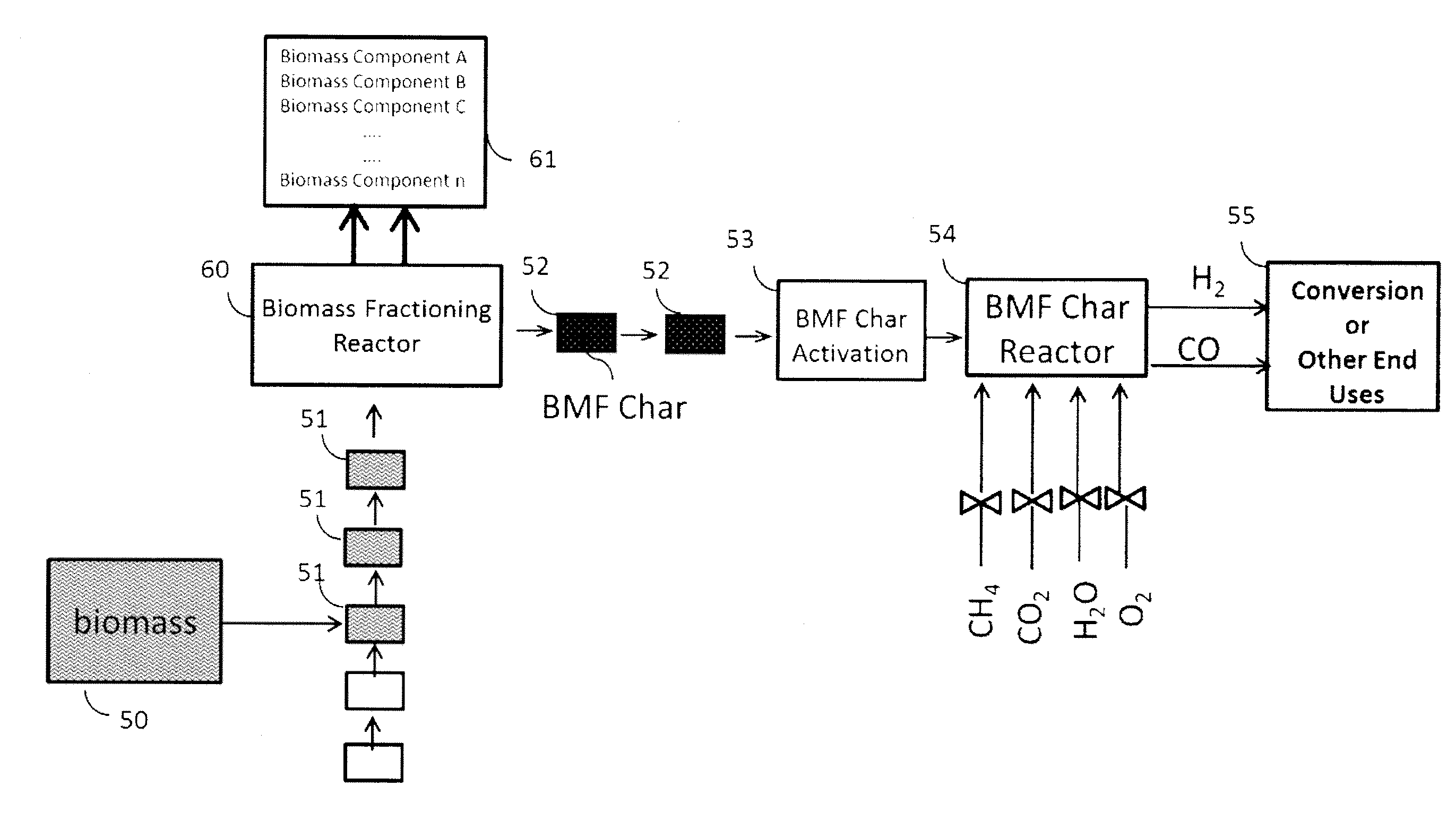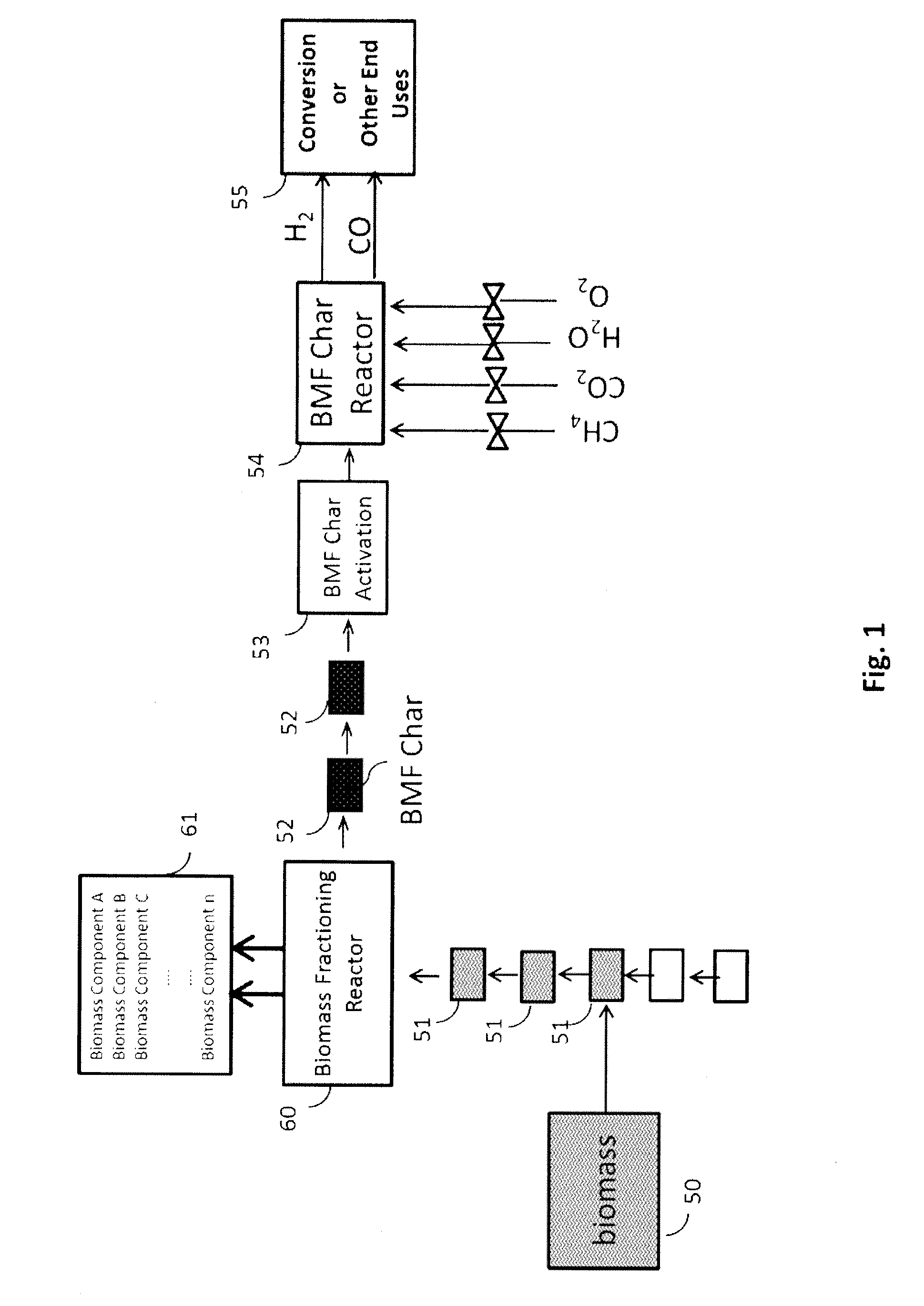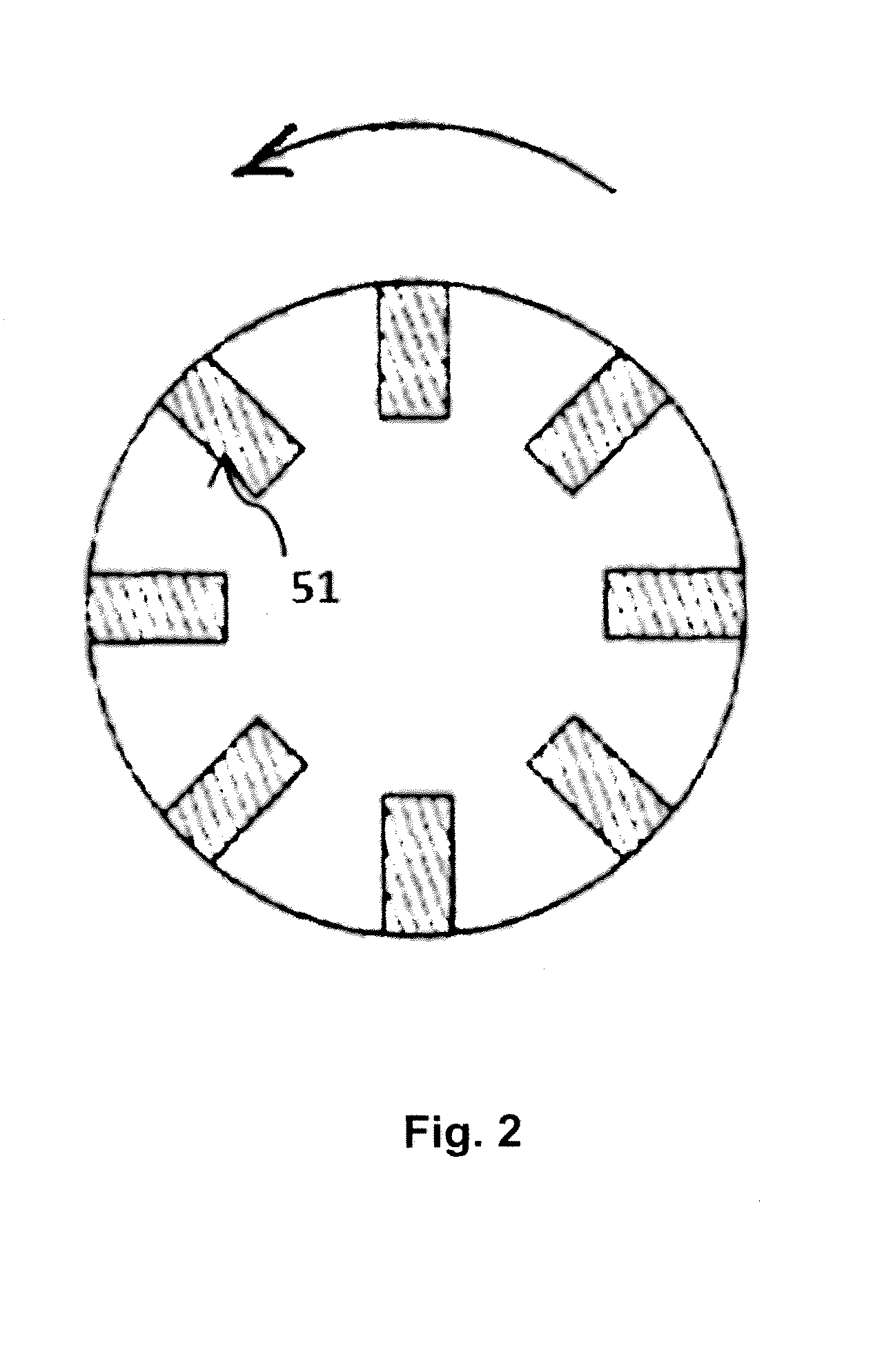Process for biomass conversion to synthesis gas
a biomass and synthesis gas technology, applied in the field of renewable fuel systems, can solve the problems of high impurities of natural gas feedstock for steam reforming, complex and expensive equipment, and the expected disruption of the global ecosystem and the lives of millions of individuals across the plan
- Summary
- Abstract
- Description
- Claims
- Application Information
AI Technical Summary
Benefits of technology
Problems solved by technology
Method used
Image
Examples
Embodiment Construction
[0012]The above-described methods of generating synthesis gas from bio-char differ substantially from the methods of the invention, which utilize a novel type of char referred as biomass fractionated (BMF) char. The BMF char may be generated according principles disclosed in co-filed U.S. patent application Ser. No. 13 / 103,905 entitled “Method for Biomass Fractioning by Enhancing Thermal Conductivity.” BMF char is generated in a unique manner using a biomass fractioning reactor in which biomass is fractioned into thin sheets, and the thin sheets are subject to specific temperature ramps and pressure shocks.
[0013]According to various embodiments of the invention, the adjustment of synthesis gas ratio is unique in that it is controlled by the nature and quantity of the feedstock. Depending on whether the feedstock is hydrogen-rich or oxygen-rich, a wide spectrum of synthesis gas compositions may be obtained.
[0014]Another embodiment features a method for producing synthesis gas from bi...
PUM
 Login to View More
Login to View More Abstract
Description
Claims
Application Information
 Login to View More
Login to View More - R&D
- Intellectual Property
- Life Sciences
- Materials
- Tech Scout
- Unparalleled Data Quality
- Higher Quality Content
- 60% Fewer Hallucinations
Browse by: Latest US Patents, China's latest patents, Technical Efficacy Thesaurus, Application Domain, Technology Topic, Popular Technical Reports.
© 2025 PatSnap. All rights reserved.Legal|Privacy policy|Modern Slavery Act Transparency Statement|Sitemap|About US| Contact US: help@patsnap.com



